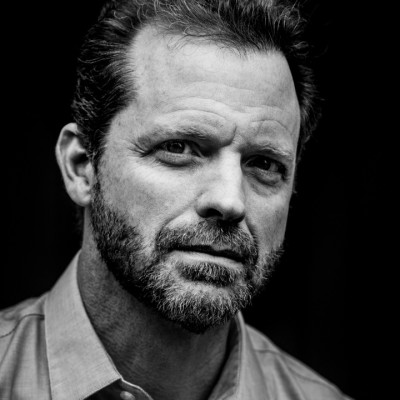Examining the past enables improvement.
Considering the future sparks motivation.
These are the building blocks of strategy for the present.
“I haven’t really started yet. I mean, I have done some research, but I haven’t started writing anything.” Most teachers would have responded with something like, “What do you mean you haven’t written anything? The rough draft is due Friday!” Most teachers are not this teacher.
I was visiting a school in southern Alabama where I had been working with the faculty on effective writing instruction. The assignment, to write about a lesser-known individual who was involved in the Civil Rights Movement, seemed straightforward, but this middle school student was struggling. He hadn’t written a single word. He hit a wall and could not figure out a way to get over it, and the clock was ticking. He needed to find resilience—not just for that day, but until a final version of his paper was complete.
What I witnessed over a few days in that classroom taught me much about how we can help others, including children, develop resilience.
We live in a world where anything “instant” and “easy” seems attractive. Hungry for fast food but don’t want to leave the house? There’s an app for that. Want your laundry detergent, a recent bestselling book, and a new USB adapter tomorrow? There’s an app for that. Even if you want to hear office sounds like staplers stapling and dot-matrix printers printing, there’s an app for that! There is not an app for resilience. We frequently celebrate but fail to cultivate resilience. We make heroes, at least for the moment, out of those who come back from devastating circumstances to reach pinnacles of accomplishment. You only need to watch a bit of Olympic TV coverage to know this is true. All this lionization of such individuals keeps them at a distance. They are not we, so while they may be resilient, we deceive ourselves into believing that we could not be like them. We often respond the same way to biblical examples of resilience, such as Joseph, Job, and Paul.
We also live in a world where change is needed. Without getting into specific issues, I think we can agree that things are not ideal. No, they never will be, but progress in the right direction certainly is possible. However, it requires individuals who have the resilience to get back into the fight after defeat and setback. We need young people who not only calculate and communicate well, but who also don’t view failure as fatal or defeat as final. We need to help each other become more resilient.
Back to the Future
The time-oriented nature of one’s outlook can significantly influence resilience. So, part of helping others become more resilient involves helping them learn to redirect their viewpoints.
Humans are uniquely equipped to imagine futures and to work to make them reality. Imagination, or envisioning what could be, fuels initial effort and fosters resilience when challenge arises. Whether it’s calculating 2 + 2 or crossing the finish line at 26.2, when accomplishing becomes challenging, imagining the future fuels the hope that sustains effort. Daniel Goleman (1) explains that contemplating positive goals propels us forward; in contrast, thinking and talking about weaknesses and struggles prompts a defensive response that is likely to diminish effort. “A conversation that starts with a person’s dreams and hopes can lead to a learning path yielding that vision.” Resilience begins with a vision that says, “Here is what you can do!” before it emphasizes the step-by-step how-to of a process.
Let’s examine how this plays out in that middle school classroom. Remember, the student had not written a single word and the rough draft’s due date was only days away. Here is how the conversation unfolded:
Teacher: How’s your report coming?
Student: I haven’t really started yet. I mean, I have done some research, but I haven’t started writing anything.
Teacher: Okay. Who is the subject of your report?
Student: I thought I’d write about Reverend Robert Graetz.
Teacher: Tell me a bit about him.
Student: Well, he was Rosa Parks’s neighbor. He led a church and supported the Montgomery Bus Boycott.
Teacher: Sounds like an interesting individual. You’ve already discovered some great details about him. Now, I want you to imagine someone you really respect reading your report. Do you have that person in mind?
Student: Yeah, I guess that would be my aunt. She teaches at the university.
Teacher: Great! Now, I want you to imagine that your aunt just read your report on Robert Graetz. She sets it down, looks at you, and tells you what she found most memorable about Robert Graetz. What does she say?
Student: Um, I guess she says something like, “Wow, what a courageous individual!”
Teacher: Excellent! So your writing really drew her attention to this man’s courage. What events in Graetz’s life did you write about that made your aunt think he was courageous?
Note the redirect here. At the beginning of the discussion, the student is lost, possibly overwhelmed, and likely spending mental energy on something other than writing. The teacher changes the direction of the student’s thinking. She doesn’t suggest the student “think harder” or exclaim, “I can’t believe this is all you’ve gotten done!” Instead, she reorients the conversation. “Imagine the future,” she suggests, and the student begins developing a vision for the writing—not just identifying who he wants to write about, but focusing on what to include and even how to structure the work. A glimpse at a possible future helps the student find resilience and return to the work with a purpose and plan.
When you sense a student is leaning toward giving up, help him/her envision the future. Call a timeout on the negative thinking, and reconnect him/her with what is not yet but could be with continued effort.
In the next blog post, we will explore the role looking back plays in helping a student find a way forward when progress slows or stalls.




